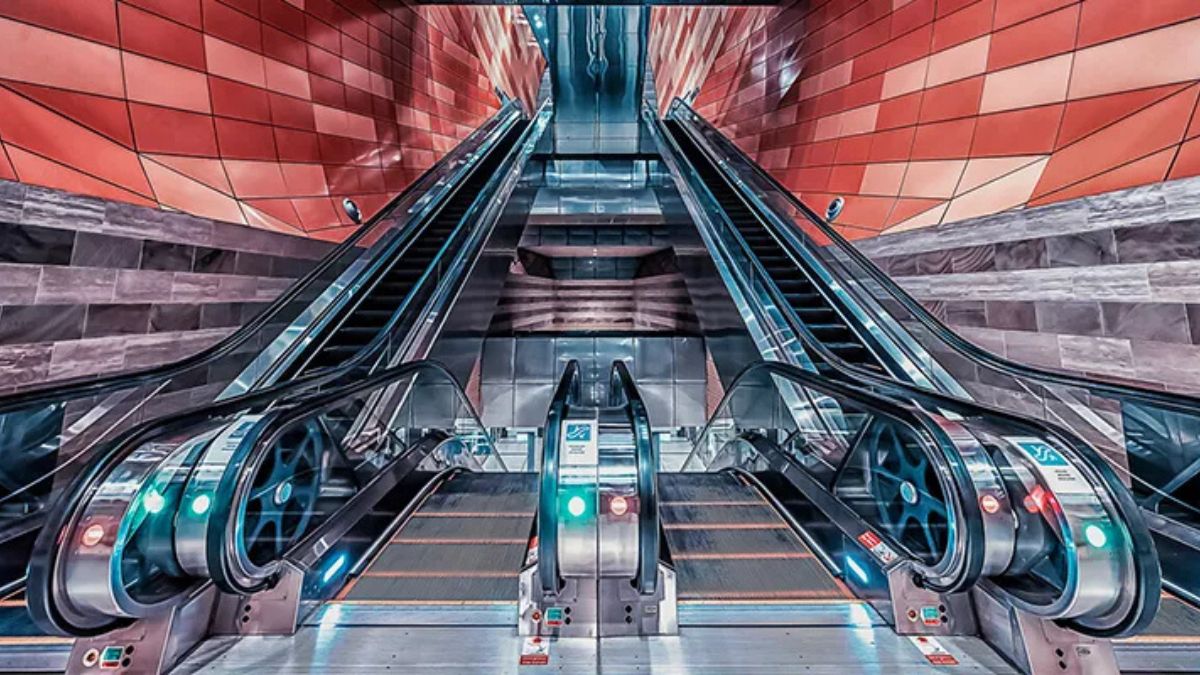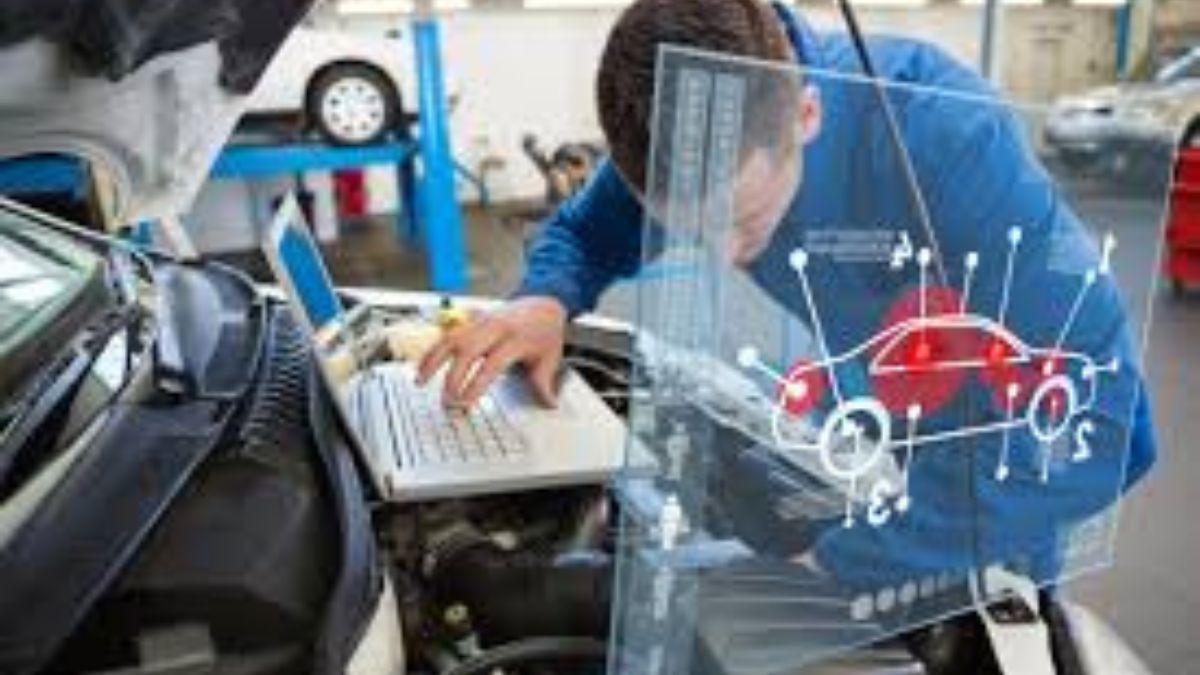TECHNOLOGY
Asphalt Applications Unveiled: Merging Creativity with Technical Skill

What Is Asphalt?
Asphalt, an intricate mixture of mineral aggregates bound together by asphalt binder, is a cornerstone material in construction. Its hallmark properties, such as robustness and cost-efficiency, have made it indispensable, especially in creating highways and roads. This flexibility is further evidenced by its application in enhancing buildings’ waterproof capabilities and its utility as a sound-absorbing medium in urban settings. Such versatility reflects asphalt’s essential role in the modern construction industry beyond merely paving. Engaging a seasoned asphalt contractor from McConnell & Associates ensures these properties are harnessed to their fullest potential, delivering infrastructure solutions that are both durable and adaptive.
The Importance of Asphalt in Urban Development
Urban areas rely on asphalt as a critical component of their transport infrastructures, providing a surface that balances durability with flexibility. As developments grow denser and populations increase, the materials supporting these spaces must facilitate seamless mobility and safety. Asphalt’s exceptional adaptability lets it withstand various climatic conditions, from the heat of summer to the cold of winter, maintaining its integrity under constant traffic. This resilience ensures infrastructure longevity and the safety of the millions of individuals who rely on it daily. As cities expand, asphalt’s role becomes more pronounced, underscoring its necessity in building efficient, modern urban landscapes.
Environmental Considerations
The environmental impact of asphalt has long been a topic of concern, sparking a wave of innovation within the industry. The emergence of permeable asphalt solutions represents a proactive step in mitigating urban flooding. By allowing water to pass through surfaces, these solutions help manage stormwater runoff, contributing to more resilient cities, especially in the face of climate change.
Innovative Uses of Asphalt
Asphalt’s utility extends beyond traditional roads and highways, finding innovative roles in diverse fields. Asphalt provides the foundation for courts and tracks in sports arenas, designed to endure and perform under the rigors of competitive activities. Its non-slip characteristics and shock-absorbing qualities make it ideal for such applications. Moreover, architects increasingly incorporate it into urban designs, using its unique properties to enhance public spaces’ aesthetics and functionality. Whether providing smooth walkways in park settings or robust surfaces for outdoor events, asphalt demonstrates its adaptability, catering to a wide range of urban and recreational needs.
Asphalt in Architecture
Incorporating asphalt into architectural designs has become a trend, blending functionality with design innovation. Architects value asphalt for its capacity to be molded into various forms and colors, enabling the creation of visually appealing spaces that still meet practical requirements. This trend highlights asphalt’s role in bridging the gap between artistic design and pragmatic application, reinforcing its place as a vital material in current architectural practices.
Maintenance Strategies for Long-Lasting Pavements
Regular inspections and crack sealing can prevent minor issues from escalating into significant problems, thus preserving the pavement’s integrity. Leveraging preventive maintenance techniques is economically beneficial and crucial for safety and performance. These strategies ensure that pavement surfaces remain smooth and safe, reducing the frequency and cost of significant repair work while optimizing infrastructure resilience.
The Role of Technology in Asphalt Application
Technological advancements are revolutionizing the asphalt industry, enhancing application and maintenance processes. The introduction of infrared temperature sensors enables precise monitoring during asphalt application, ensuring optimal conditions for installation. Automated paving systems further streamline the construction process. These technologies collectively contribute to developing smoother, more durable road surfaces, translating to longer-lasting infrastructure with fewer disruptions over time.
Future Trends in Asphalt Use
Looking toward the future, the asphalt industry is poised for continued innovation and growth. The burgeoning interest in smart cities brings opportunities to integrate digital technology with traditional infrastructure materials. Embedded sensors in asphalt can monitor traffic patterns, detect pavement stress levels, and even alert maintenance teams to issues in real time. These innovations promise not only safer roads but also more efficient transportation systems. The integration of asphalt in the digital infrastructure of future cities highlights its enduring relevance, as it supports smarter, more adaptable urban environments.
Conclusion: A Versatile Material for Modern Needs
In conclusion, asphalt is a remarkably versatile material that continues to meet the demands of modern infrastructure and urban development demands. Its adaptability allows it to support various applications while evolving to incorporate sustainable practices and new technologies. By harnessing its full potential, stakeholders in development and infrastructure can create resilient spaces poised to meet tomorrow’s challenges.
TECHNOLOGY
Key Considerations When Selecting Escalator Parts Supply

Escalators may seem like simple fixtures in the built environment, but behind their seamless operation lies a complex system of interdependent components. This article examines the essential components that ensure escalators operate safely and efficiently, including drive systems, handrails, sensors, and emergency circuits. It also explores the significance of quality standards, compatibility challenges, cost considerations, supplier relationships, and the impact of evolving technology. Whether you are a facility manager, technician, or building owner, understanding how these elements come together is essential for maintaining performance, ensuring safety, and preparing for the future.
Understanding Essential Escalator Components
Escalators are a staple in public spaces and commercial properties, designed for efficiency, safety, and reliability. At the heart of their smooth operation are numerous components that work in precise harmony. The main mechanical assemblies—such as steps, handrails, truss structures, and drive systems—are responsible for safely transporting thousands of passengers daily. Even the simplest ride requires careful engineering, as the tolerances in step linkages or the durability of handrail guides directly affect long-term usability and passenger experience.
Reliable escalator parts supply Niles, IL, or similar sources ensure that facilities can replace components before failures occur. The often-overlooked safety circuits and programmable controls play a crucial behind-the-scenes role, monitoring movement and activating emergency stops to protect riders from harm. For those responsible for escalator maintenance, recognizing the signs of wear—such as subtle step misalignments, changes in handrail speed, or unusual noises—provides an early warning of potential issues. Environmental conditions, cleaning routines, and even the types of shoes most commonly worn by riders can influence how different parts age. Proactive replacement and a clear understanding of what makes each part essential help keep systems running efficiently, boosting public confidence and minimizing downtime.
Assessing Quality Standards For Safety
Safety is not negotiable in escalator maintenance and repairs. Each component must conform to rigorous, industry-wide standards to ensure rider well-being and system reliability. Escalator parts and their installation should meet specific criteria to protect both passengers and technicians. This translates to a careful evaluation of every replacement, insisting on parts that have been proven through independent laboratory testing with clear traceability back to reputable manufacturers. Resources like Engineering Learn help illustrate the complexity and importance of each part involved in a properly functioning system.
A part that might seem similar could actually have significant differences in durability or performance, especially under heavy load or continuous use. Substandard or untested parts not only risk operational failures but can create hazards that are difficult to detect until an incident occurs. Facility teams that prioritize working with transparent suppliers —those willing to share their origin, compliance, and quality certifications —significantly reduce the likelihood of safety incidents. This diligence not only meets legal requirements but also strengthens the culture of responsibility that defines the best facility operations.
Compatibility And Sourcing Issues
The escalator industry is characterized by a wide variety of designs, manufacturers, and model-specific parts. Ensuring the compatibility of replacement components is far from a simple task. Each escalator model is engineered to exact specifications, from step geometry to electronic controller interface. Missteps in sourcing can result in awkward fits, inefficient operation, or even voided warranties that undermine the system’s future performance.
- Manufacturer Specifications: Always verify technical information, such as part numbers, material tolerances, and physical dimensions, before making a purchase. Minor discrepancies can lead to larger mechanical or safety issues.
- Legacy vs. Modern Units: Many locations still operate escalators built decades ago. For these, sourcing parts might require finding original specifications or engaging suppliers with expertise in legacy systems who can offer suitable equivalents. Some modern components can be retrofitted, but only with proper engineering support.
- Authenticity Verification: The rise of counterfeit parts in the global supply chain means that reputable suppliers should consistently provide documentation for every part they ship. Items lacking verification may not perform as advertised, placing both equipment and users at risk.
Carefully resolving compatibility concerns yields improved performance, reduced maintenance-related stress, and increased confidence for both riders and property owners.
Balancing Cost And Lifecycle Value
One of the most common challenges maintenance teams face is the pressure to contain costs. However, selecting parts based solely on initial price tags is rarely the wisest choice when considering escalator reliability and longevity. It is crucial to calculate the total cost of ownership, factoring in installation complexity, expected service intervals, and the risk of collateral damage from premature failures.
Premium parts often come with enhanced engineering, superior materials, or advanced coatings designed for high-traffic areas and longer lifespans. While they may cost more upfront, the savings in reduced replacement frequency, improved system uptime, and fewer emergency repairs often outweigh any initial budget adjustments. For resource-constrained organizations, this approach transforms parts purchasing from a short-term fix into a strategic investment in the building’s reputation and user safety.
In real-world scenarios, escalator systems that rely on low-cost or generic substitutes frequently experience cascading failures, where one substandard part causes excessive wear in related assemblies. This can rapidly escalate costs and disrupt daily operations. Building a robust partnership with suppliers who understand lifecycle economics empowers facilities professionals to provide reliable service while optimizing long-term value.
Supplier Partnerships And Support Services
Selecting a parts supplier is as much about the relationship as it is about the components themselves. Leading suppliers offer more than just a catalog; they become indispensable partners by providing technical assistance, ongoing support, and transparent communication. Effective support services can mean the difference between a minor inconvenience and a severe disruption.
- Responsive customer service is essential—many escalator issues require immediate attention, particularly in high-traffic environments such as airports or shopping centers.
- Comprehensive technical documentation, like installation diagrams and troubleshooting guides, simplifies maintenance and reduces human error during repairs.
- Warranty options demonstrate supplier confidence in their products and provide peace of mind for maintenance teams, particularly for critical safety components.
Developing a supply chain anchored in trust and dependability ultimately improves operational outcomes. In fast-paced commercial settings, these partnerships streamline processes, resolve emergencies, and enable more strategic maintenance scheduling.
Lead Times And Inventory Management
Timely access to parts is crucial for maintaining escalator operation and keeping public spaces open. Unplanned downtime, even for a few hours, can impact thousands of users and lead to complaints or revenue loss. Savvy facility managers recognize the value of a modern inventory system that forecasts parts demand based on historical usage and system analytics.
Collaborating with parts suppliers who maintain precise and accurate delivery estimates can drastically minimize disruptions. According to industry reports, best-in-class facilities deploy digital inventory management solutions that automatically trigger restocking and help anticipate future repair needs. Preemptively stocking high-use or hard-to-find parts ensures that urgent repairs are addressed without delay, supporting overarching operational goals and tenant satisfaction.
This level of preparedness transforms what might have been an interruption into a routine service event, highlighting the importance of strategic partnerships and technology-driven inventory control in modern facilities maintenance.
Regulatory Compliance And Documentation
Maintaining meticulous records for all escalator repairs and part replacements protects both property owners and service providers. Compliance extends beyond simple best practices—many local, national, and international regulations require that records be kept up-to-date and accessible. These records serve as proof of proper procedures, support warranty claims, and aid in legal defense in the event of incidents.
- Every part swap should be logged, including information on certifications, sources, and installation technicians, to create an auditable history.
- Suppliers should consistently provide certificates of compliance for parts, particularly when critical safety mechanisms are involved.
- Regular review of codes and standards is necessary, as regulatory environments can shift in response to new technologies or historical data on escalator safety.
Thorough documentation also streamlines future maintenance, facilitates budgeting, and reinforces a building’s commitment to transparency and safety.
Future-Proofing Through Innovation And Upgrades
Escalator technology is continually evolving, with advances focused on enhanced safety, improved energy efficiency, and more intelligent system diagnostics. Facilities that plan for periodic upgrades remain competitive and are better positioned to respond to changing user expectations or regulatory shifts.
Working with suppliers who offer solutions compatible with both existing equipment and future developments supports long-term goals. These suppliers may provide retrofit kits for wireless monitoring, energy-saving drives, or new safety enhancements that align with upcoming industry standards.
Forward-thinking planning fosters flexibility and resilience, so escalator infrastructure stands ready for the unknowns of tomorrow and sustains operational excellence today.
TECHNOLOGY
The Art of Automobile Customization: Tips for Personalizing Your Ride

Automobile customization has become a popular trend among car enthusiasts, offering a unique way to personalize vehicles. From enhancing performance to altering the exterior design, customizations allow owners to express their style and improve their driving experience. Regarding automobile customization, options abound, from strengthening the exhaust system and adding personalized wheels to integrating a sophisticated audio setup, all catering to personal styles and preferences. As automotive technology advances, the opportunities for customization have expanded, allowing car owners to convert their vehicles into something distinctly their own easily.
A commonly chosen method for safeguarding a vehicle’s paint is ceramic coating, which offers enduring protection against environmental pollutants and moisture damage. This coating improves the car’s look by delivering a shiny finish and simplifying the cleaning process. The application of ceramic coating for cars in Lakeland, FL, is a highly recommended option for those who want to preserve their vehicle’s exterior while ensuring it remains pristine. This service provides additional safeguarding and boosts the vehicle’s resale value by keeping its visual attractiveness.
Benefits of Personalizing Your Vehicle
Modifying your vehicle is more than just about looks; it provides several advantages that significantly improve your overall driving experience. It serves as a form of self-expression, transforming your vehicle into a canvas that reflects your unique style. Customization can range from subtle changes, like new paint colors, to extensive modifications, like custom rims and interior designs.
In addition to personal style, customization can improve your vehicle’s functionality and value. Upgrades like advanced technology, premium sound systems, and high-performance tires can enhance safety and enjoyment. Additionally, a properly carried-out customization can increase resale value, making it a valuable investment for your vehicle’s future.
Understanding Aesthetic Modifications
Exterior Enhancements
Exterior enhancements are essential for elevating a vehicle’s appearance while offering lasting protection. From paint protection films to custom wraps, these modifications enhance the aesthetic appeal and preserve the finish. Searching for automotive ceramic coating near me is a common step for car owners looking to add a glossy protective layer that guards against UV rays, dirt, and water damage. These coatings improve visual brilliance and reduce maintenance efforts over time. As more drivers prioritize style and function, aesthetic upgrades like ceramic coatings have become key to maintaining a car’s showroom-quality look.
Interior Upgrades
Drivers can truly integrate comfort and luxury into a vehicle’s interior. Modifications in this area can range from bespoke leather upholstery to advanced infotainment systems. High-quality sound systems and customized seating add comfort and a touch of elegance that transforms daily commutes into luxurious journeys. These enhancements make every ride enjoyable and reflect the owner’s attention to detail and appreciation for quality.
Performance Upgrades and Considerations
While many focus on visual appeal, performance upgrades are equally valuable, dramatically improving the driving experience. Modifications such as upgraded suspension systems, high-performance tires, and exhaust enhancements can significantly boost a vehicle’s performance metrics. These changes improve not just speed and handling but also the overall efficiency and safety of the car.
However, it’s crucial to ensure these upgrades are professionally installed. Expert involvement guarantees that the modifications function correctly and safely, minimizing risks on the road while maximizing performance benefits.
Legal and Safety Aspects
Understanding the legal landscape is essential before embarking on any customization project. Various states have regulations governing emissions, noise levels, and safety features, which can directly impact the extent of permissible modifications. Keeping abreast of these laws ensures that your vehicle remains road-legal and that you avoid potential fines and penalties.
In addition to regulations, maintaining safety should be crucial during the customization process. Ensuring correct installation and following safety standards are essential for safeguarding your vehicle and yourself.
Cost Considerations and Budgeting
The financial aspect of customization is essential and should not be ignored. Being aware of the costs associated with different modifications helps you prioritize effectively, allowing you to enjoy the process without financial stress. Keeping your project within a comfortable budget is essential while achieving your desired outcomes.Having a clear budget not only aids in managing expenses but also enables you to plan upgrades that provide the best returns in terms of both enjoyment and potential resale value.
TECHNOLOGY
The Art and Science of Sustainable Farming: Practices and Benefits

Introduction to Sustainable Farming
Sustainable farming goes beyond just planting and harvesting; it is about nurturing the land and maintaining a balance with nature. It involves methods that protect the environment, enhance soil fertility, reduce pollution, conserve water, and promote biodiversity.
Sustainable farming is characterized by an integrated systems approach that balances agricultural productivity with environmental stewardship. This balance is essential to guarantee that future generations can fulfill their needs without hindrance. Sustainable methods also enhance the resilience of farming systems, enabling them to face better challenges like climate change, economic instability, and increasing resource needs.
Importance of Sustainable Farming
As the worldwide population is expected to approach almost 10 billion by 2050, the pressing demand for sustainable farming practices has never been more critical. These practices are not a phase but a necessity in guaranteeing the continued availability of food, water, and other resources. Sustainable farming is essential to maintaining soil health, regulating water cycles, and reducing pollution, all of which are integral to sustaining long-term agricultural productivity. As outdoor enthusiasts explore new places to enjoy natural landscapes, such as horseback riding trails Chester County, they become increasingly aware of the significance of landscapes preserved by sustainable farming practices.
Farmers contribute to stabilizing ecological systems by adopting sustainable methods while efficiently meeting society’s food needs. Practices such as reduced tillage, crop rotations, and organic fertilizers help rebuild soil structure and fertility, ensuring that farmland remains productive and viable over the long term. Meanwhile, agroforestry and organic farming promote environmental biodiversity, which is essential for maintaining resilient ecosystems capable of adapting to environmental stresses.
Essential Sustainable Farming Practices
A diverse range of practices form the backbone of sustainable farming. Crop rotation, an age-old agricultural method, helps maintain soil nutrient levels and minimizes the chance of soil erosion. Farmers can naturally manage soil fertility and pest populations by varying the types of crops planted in a particular area, resulting in healthier and more productive farmland.
Cover cropping is an essential practice that entails sowing particular crops to shield the soil instead of growing them for harvest. These cover crops help prevent erosion, manage soil fertility, and increase biodiversity in the agroecosystem. Furthermore, integrated pest management (IPM) utilizes biological, cultural, physical, and chemical tools to manage pest populations to minimize economic, health, and environmental risks.
Technological Advancements in Sustainable Agriculture
Technology has always advanced agricultural practices, and in the realm of sustainable farming, it is becoming increasingly vital. Technological innovations such as precision farming tools, drones, and remote sensing are transforming how farmers approach agriculture, improving productivity and sustainability. Precision farming allows farmers to apply inputs more efficiently, using data to target specific areas within a field, thereby reducing waste and environmental impact.
Drones and satellite images provide farmers with important information about crop health and soil status, allowing them to make knowledgeable choices that enhance resource management. Additionally, advancements in biotechnology are helping to develop more resilient crops to drought, pests, and disease, further supporting sustainable farming goals.
Economic Benefits of Sustainable Farming
The economic appeal of sustainable farming cannot be understated. While the initial investment might be higher than conventional methods, sustainable farming practices often lead to savings over time. This is mainly due to reduced dependency on expensive chemical inputs and increased resilience to market and climate fluctuations.
Additionally, the need for eco-friendly products has increased as shoppers become more aware of environmental issues. These shoppers are generally ready to spend more, considerably boosting a farm’s earnings. Sustainable farming practices open up new market opportunities and create a unique value proposition for farmers looking to cater to this evolving market segment.
Social and Community Impacts
Sustainable farming can profoundly impact local communities. Fostering community engagement creates employment opportunities and preserves traditional farming knowledge that might otherwise be lost. Educational programs tied to sustainable farming practices promote awareness and encourage sustainable practices among new generations, ensuring that these methods continue to spread and evolve.
Building a strong local food system enhances community resilience, reduces dependency on global supply chains, and supports local economies. Sustainable farms often act as community hubs that unite people, fostering a sense of collective responsibility and shared purpose.
Challenges in Adopting Sustainable Practices
Despite its appeal and benefits, transitioning to sustainable agriculture can be challenging. Key obstacles include the high initial costs of setting up sustainable operations and resistance to change due to traditional farming mindsets. Farmers making the switch may also face challenges learning new techniques and accessing markets for their sustainable products.
Addressing these challenges requires institutional support and incentives for farmers willing to shift to sustainable practices. According to National Geographic, flexible and region-specific strategies are essential to making sustainable agriculture adaptable and successful across different regions.
Future Trends in Sustainable Agriculture
The future of sustainable farming is full of promise as it evolves in response to modern challenges and opportunities. Innovations such as urban farming, vertical agriculture, and regenerative practices show great potential in addressing food production challenges, especially in urban and land-constrained environments.The demand for sustainable methods grows as the global community becomes more aware of environmental issues.
Adopting new technologies and farming methods represents a positive shift toward more resilient and efficient agricultural systems, ensuring sustainable farming remains at the forefront of global farm advancement.
-

 BLOG8 months ago
BLOG8 months ago3d659.com blog: A Resourceful Hub for Information
-

 GAMES8 months ago
GAMES8 months agoWest vs East Match Player Stats
-

 BLOG8 months ago
BLOG8 months agoite:mommyandlove.com/baby-names/: Discover Unique and Meaningful Baby Names
-

 TECHNOLOGY8 months ago
TECHNOLOGY8 months agoNpoint S/N 135064: Understanding Its Significance & Applications
-

 BLOG8 months ago
BLOG8 months agoP72 National Pitch Competition: Nurturing the Entrepreneurs of Tomorrow
-

 BLOG7 months ago
BLOG7 months agoElizabeth Huberdeau: Women Behind The WWE Superstar
-

 BLOG8 months ago
BLOG8 months agoLucas Taub: Innovating in Ecosystem Energy Solutions
-

 NEWS7 months ago
NEWS7 months agoMisty_moless_2: A Rising Star in the Digital World
